Samsung Galaxy S 4 Review - Part 1
by Brian Klug on April 24, 2013 12:01 AM ESTDisplay
We wrote about how we suspected that SGS4 would go to a 5-inch 1080p SAMOLED display just after CES. Turns out that was spot on, as the SGS4 includes a 5-inch 1080p Full HD SAMOLED panel, the latest in Samsung's AMOLED roadmap. Samsung's naming stays true, and there's no Plus tacked on at the end, so we get another non-RGB stripe subpixel geometry with SGS4. The last few Samsung AMOLED variants we've seen have had different subpixel grids, and the one on the SGS4 is possibly the most interesting to date. There's still a bias toward more green subpixels than blue or red, this isn't an RGB stripe at all, but instead of the previous RG,BG layout we see this offset pattern with green on one line, then blue and red on another line. Interestingly enough the blue subpixel appears to be a square, and red and green appear to be circles, with the difference in area possibly offsetting the luminous efficiency of each material. Whatever the reason (Samsung has never been official or forthcoming any of these subpixel patterns each time they've changed them) it's present on the SGS4.
At this size however I have to admit that I find the pursuit of the subpixel geometry more of an educational one than something which affects users. While I could occasionally see it on the SGS3, I definitely do not see it on SGS4. The subpixels are now small enough that whatever the pattern, it all looks like a homogenous light-emitting surface, which was the goal after all. I could bring up the visual acuity discussion again but just trust me that it's small enough to not be visible even with actually perfect (not legally perfect, which is different) vision.
So resolution is great and up to par with all the other LCD-bearing flagships this year, lack of RGB stripe notwithstanding. There's that remaining question about brightness, contrast, outdoor visibility, and of course calibration and the saturation issue that has persisted with AMOLED from generation to generation.
On the brightness front, the SGS4 includes dynamic contrast functions that cannot be disabled and change as a function of what is being displayed. There's an "auto adjust screen tone" checkbox under display but don't let that fool you, that doesn't disable dynamic contrast, just white point. Under screen mode are the mDNIe toggles we've seen on countless other previous Samsung Android phones with AMOLED panels, only here we notice something interesting. There have always been four toggles as long as this option has existed, only what's different is now, one of them is named "Professional photo." Reviews of other regional variants of the SGS4 have included the same button but marked "Adobe RGB." Oddly enough it seems that the North American versions at least have this renamed for some reason, but undoubtedly the function is the same. Many speculated that this is now a toggle for some full CMS (Color Management System) which "fixes" the inherent color space issues with AMOLED and oversaturation that occurs when looking at sRGB content on such devices. Unfortunately, I can confirm that my initial suspicions that this is just a continuation of the mDNIe (lite) settings from previous generation is in fact correct. I reverse engineered what I could of these settings from both kernel messages while changing the toggles, and looking at the kernel sources. Turns out that 'Professional photo' mode is actually the 'Natural' mode renamed from previous versions.
So the question was whether the color space or white point actually does change with this mode enabled. I ran the SGS4 through our display tests in each of the modes and think the full color space plot tells the story. The sanest of them all really ends up being the strangely-named 'Movie' mode. Professional photo gives the big gamut with a white point closer to 'Movie,' which is to say around 7000K, but it doesn't fundamentally change the still-present oversaturation or color management issue that exists in Android with these wide gamut displays. Most users admittedly don't care however and just see "bright" colors. Theres' an Auto mode as well which the device ships with that basically has a matrix of mDNIe settings for targeted applications (for example the Gallery, Browser, Video playback) and so forth get settings, which you can see in the kernel.
| CalMAN Display Comparison | ||||||||||||
| Metric | iPhone 5 | iPhone 4S | HTC One X | SGS3 | Samsung Galaxy Note 2 | Google Nexus 4 | HTC Droid DNA | HTC One | SGS4 | |||
| Grayscale 200nits Avg dE2000 | 3.564 | 6.162 | 6.609 | 4.578 | 5.867 | 7.686 | 6.738 | 5.391 | 7.511 | |||
| CCT Avg (K) | 6925 | 7171 | 5944 | 6809 | 7109 | 8506 | 8108 | 8118 | 7020 | |||
| Saturation Sweep Avg dE2000 | 3.591 | 8.787 | 5.066 | 5.460 | 7.986 | 8.517 | 5.856 | 3.365 | 7.823 | |||
| GMB ColorChecker Avg dE2000 | 4.747 | 6.328 | 6.963 | 7.322 | 8.185 | 7.531 | 6.687 | 4.656 | 7.440 | |||
In the "Movie" mode things are better controlled than the Note 2 on the GMB color checker card test, which is the most important one for me. White point is also no longer the crazy 8000K that we saw before, 7000K is commendable for Samsung at this point. Keep in mind that maximum brightness changes in each mode as well as we effectively clamp things, I measured a maximum of 319 nits in Dynamic mode, 311 nits in Movie mode, and 255 nits in Standard, for example.
Running the display at maximum brightness for too long will also get you into an overheating or thermal protection mode as well, which we've seen on countless other AMOLED variants. Most of the time I suspect users will run on Auto brightness however which keeps brightness down to a much lower level to save battery and prevent that from becoming a problem.
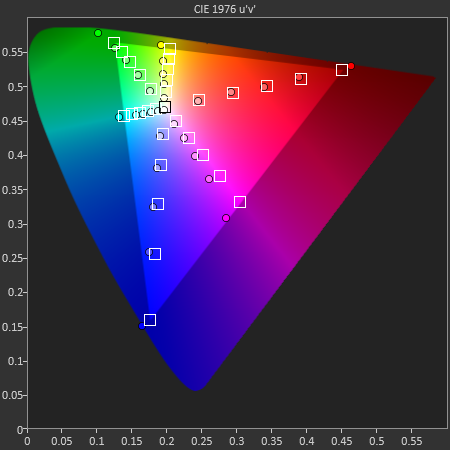
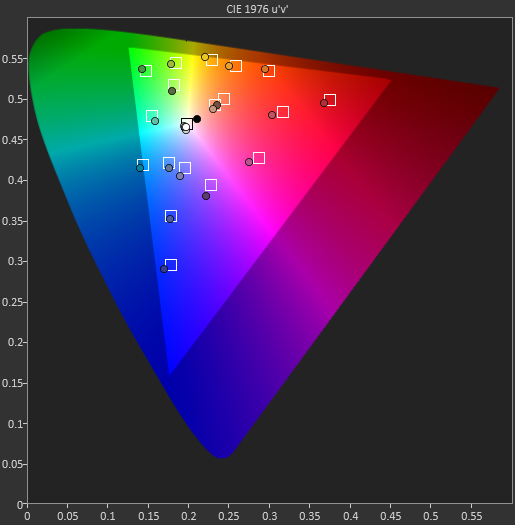
Because "Movie" was the closest to sRGB of all the modes, I selected it for the actual results that I'll present in the table. Admittedly this mode does tighten things up a bit, but it still isn't perfect and I'd still like to see Samsung do something to reign this in at some point.


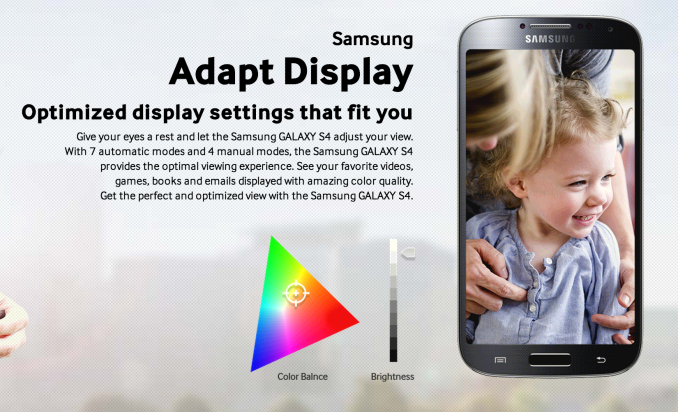




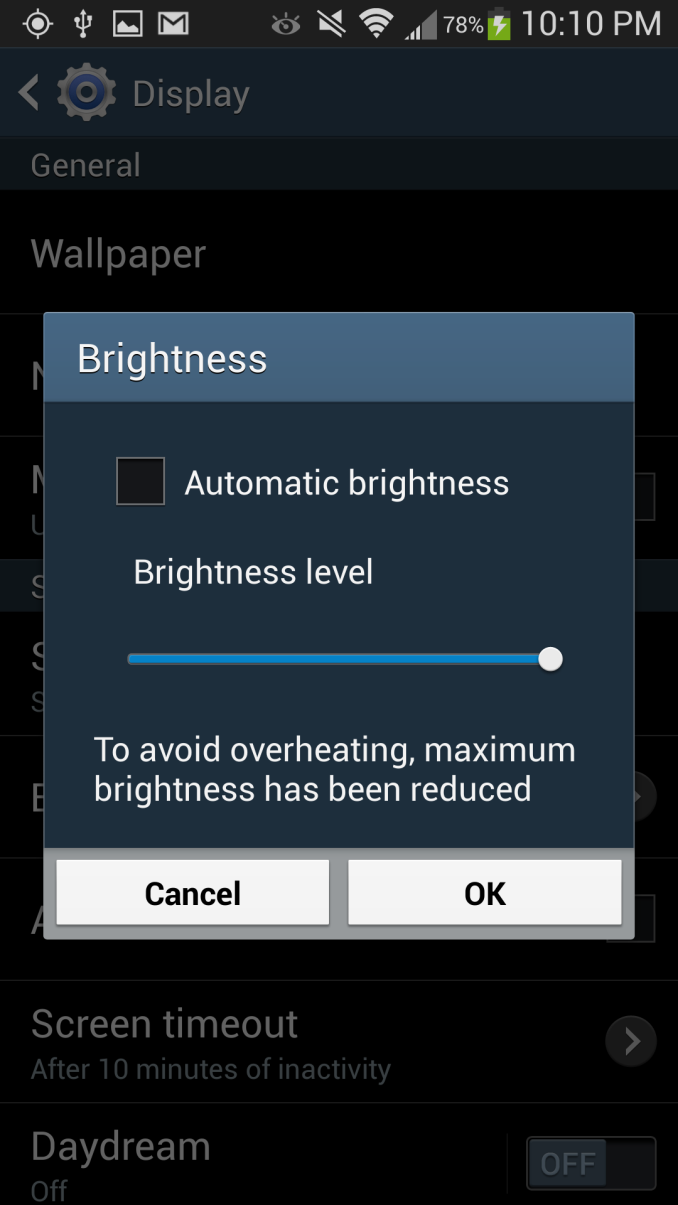
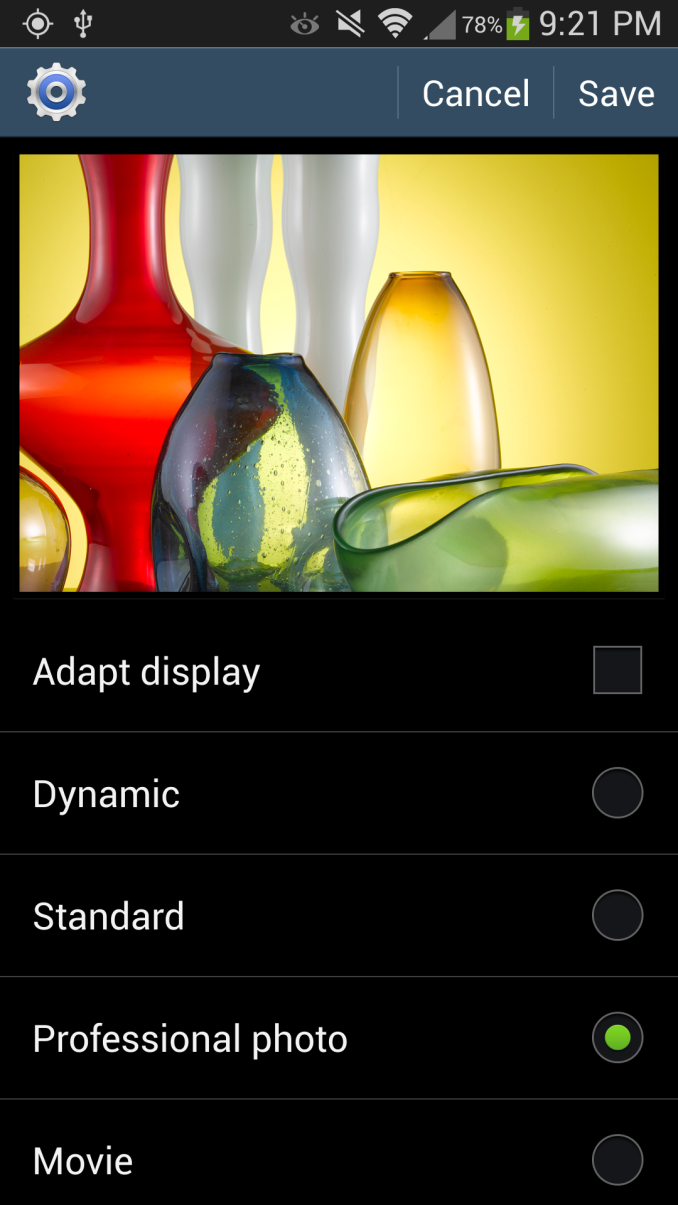
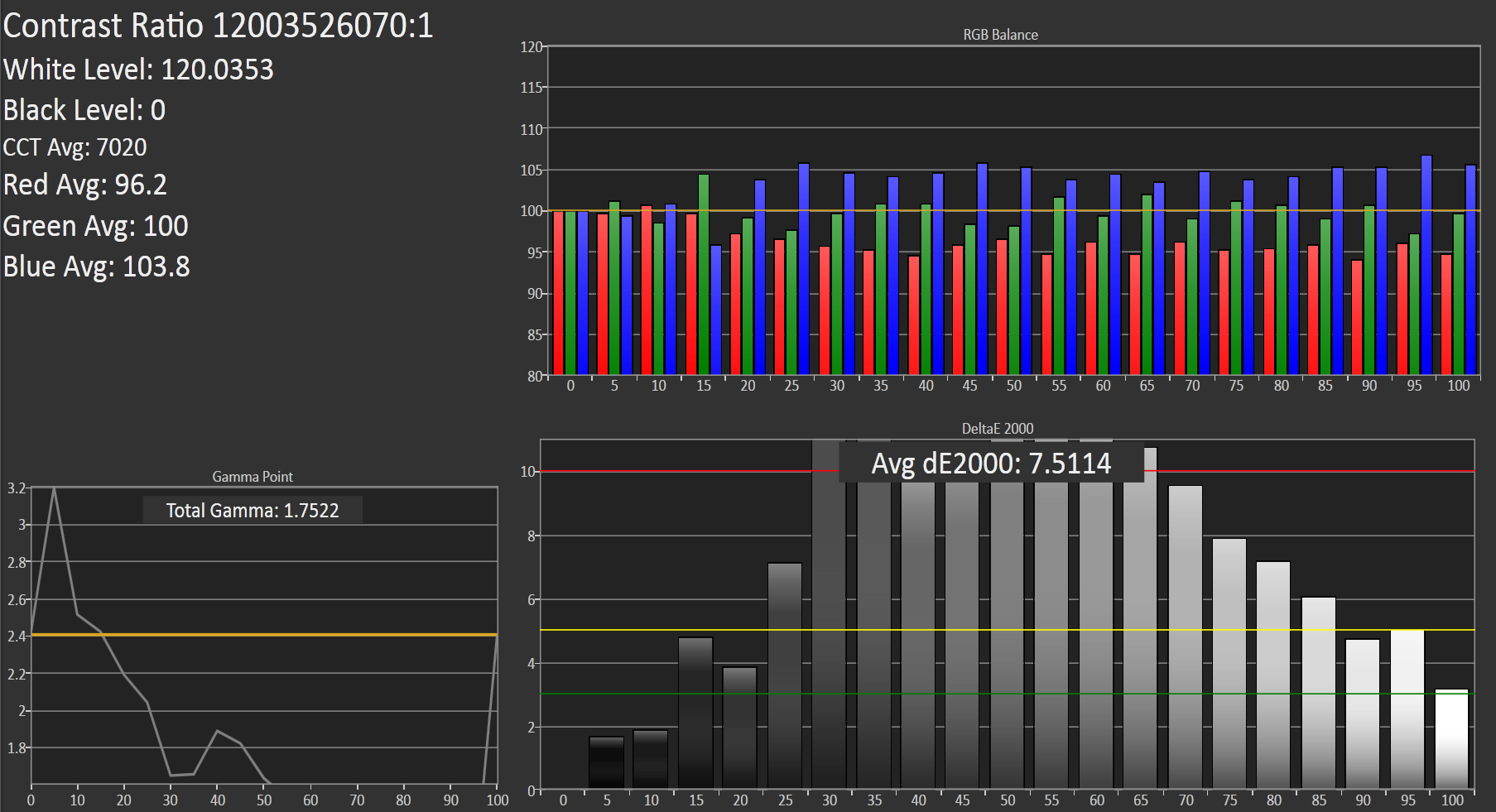








335 Comments
View All Comments
slatanek - Wednesday, April 24, 2013 - link
same goes for plastic - it can crack and scratch. and it just feels like... well plastic. Samsung phones being one of the worst when it goes to quality feel. Nokia and HTC make the best "feeling" plastic phones I reconslatanek - Wednesday, April 24, 2013 - link
oh, one more thing. materials such as aluminum, glass etc. have a premium feels to them. same for polycarbonate. the difference being how these material age. my friend has an iPhone 4S with a cracked back, but it doesn't look that bad, if anything it has a vintage look and this is how premium materials age. if you have a plastic phone thats scratched or cracked it looks pretty much like garbage. and Samsung is particulalry bad at this - making their phones plastic glossy which means it reflects light in an uneven fashion and it just looks cheap. now bare in mind we're talking about flagships, they just should feel premium. I don't mind having a plastic midrange phone but at highend I expect top notch quality not only from the internals. same applies to cars - a tuned Honda may be as fast as a Ferrari but does it mean it is equally good? I don't think so. And I don't often hear Ferrari owners complaining about leather seats "cause they scratch much more than the regular ones".superflex - Wednesday, April 24, 2013 - link
So you only cracked the back cover. How about the millions of people who dropped their plastic phone and cracked the bezel or non removable shell?Do you really think people only break the removable battery covers?
lopri - Wednesday, April 24, 2013 - link
What other Snapdragon 600 devices? (plural) It's just the S4 and the One. (OK, LG has Optimus G Pro but you didn't see the markings on the chip on it and only ran browser benches with that)Brian Klug - Wednesday, April 24, 2013 - link
I have an LG Optimus G Pro here, so that's three I guess.-Brian
CrystalBay - Wednesday, April 24, 2013 - link
Hi Brian , I would have also like to see a comparison of the external speakers quality. It seems Sammy did not learn from previous Galaxys.Roland00Address - Wednesday, April 24, 2013 - link
From WikipediaAsus Padfone Infinity, HTC One, LG Optimus G Pro, Samsung Galaxy S4 (GT-I9505), ZTE Grand Memo V9815, Xiaomi Mi-2S, Pantech Vega Iron
gnx - Wednesday, April 24, 2013 - link
The Pantech Vega Iron seemed interesting, at least in terms of casing. The soon due Lenovo K900 also is supposedly a metal-alloy, though we'll wait to see.Toss3 - Wednesday, April 24, 2013 - link
Not as thorough as the HTC One review, but the best I've read thus far. THIS is how you write an objective review. Great comparisons, and detailed information about every aspect of the device.UpSpin - Wednesday, April 24, 2013 - link
Well written review.Especially your battery run down and display analysis are one-of-a-kind. Reviews on Engadget or TheVerge test it very subjectively and dim the display to 50% software brightness (which favors OLED because at 50% the OLED display is much darker than the LCD to save power, thus SGS4 scores much longer battery life, because the test is just wrong) You set it to fixed 200nits and test it very objectively.
You also highlight issues occuring with OLED (overheating and thermal issues). Personally I think OLED is the future-proof technology (I also bought a smartphone with an OLED display), but sadly the brightness is nothing spectacular and so the color accuracy. I wouldn't buy a smartphone with OLED again, at the moment.
LCD is just better, even if black isn't true black any longer. That's a small tradeoff, therefor I get outdoor usability, color accuracy and larger sub-pixels.
In the end, one can choose between HTC One (spectacular design, great display, usable camera, usable speakers, smooth and simple software) or the SGS4 (faster SoC which sadly overheats, removable battery, expandable storage, software loaded with gimmick features which sadly slow down the whole smartphone).
Because I won't use the gimmick features, rather just even switch to Cyanogenmod, bought but almost never used the second replacement battery in my current smartphone and the whole battery life improved to at least 3-4 years (my current battery is 3 years old and runs fine), never switched my SD-Card (32GB is plenty), but want it as point-and-shoot replacement and like the look of the HTC One, it's my personal favorit.